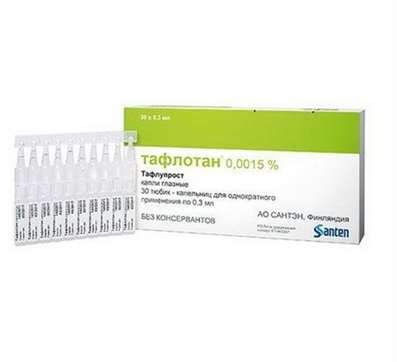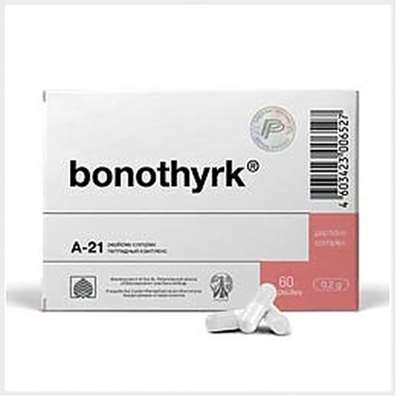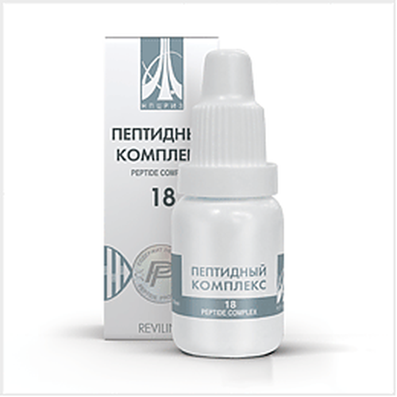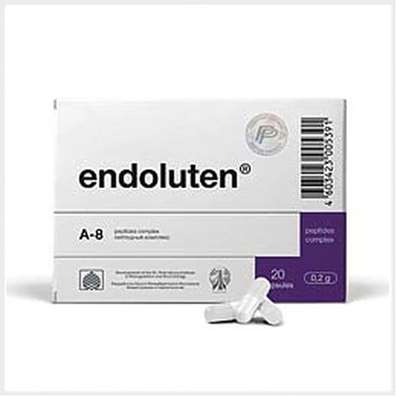Instruction for use: Filgrastim
I want this, give me price
Trade name of the drug – Leucostim, Neupogen, Neupomax, Tevagrastim, Zarcio, Granulocyte colony-stimulating factor human recombinant (rchG-CSF), Myelastra, Filgrastim, Leicita, Granogen, Grasalva, Immugrast, FILGRASTIM-NANOLEC, Neitrostim, Filergim
The Latin name of the substance Filgrastim
Filgrastimum (genus. Filgrastimi)
Chemical name
N-L-Methionylcolonium-stimulating factor (human genetically engineered); A non-glycosylated protein consisting of 175 amino acids
Pharmacological group:
Stimulators of hematopoiesis
The nosological classification (ICD-10)
D71 Functional disorders of polymorphonuclear neutrophils
D72 Other disorders of white blood cells: Lymphocytopenia; Hereditary neutropenia
Y43.3 Adverse reactions in the therapeutic use of other antitumor drugs
Characteristics of the substance Filgrastim
Stimulator of leukopoiesis. It is produced by a laboratory strain of the bacterium Escherichia coli, into which gene of granulocyte colony-stimulating factor of a person was introduced by genetic engineering methods.
Sterile, colorless liquid for parenteral administration. Molecular weight 18800 Da.
Pharmacology
Mode action - Leukopoietic.
Hematopoietic growth factor. Interacts with receptors on the surface of hematopoietic cells, stimulates cell proliferation, differentiation and functional activation. Human granulocyte colony-stimulating factor (G-CSF) is produced by monocytes, fibroblasts and endothelial cells. G-CSF regulates the production of neutrophils and the release of functionally active neutrophils from the bone marrow to the blood. G-CSF is not a specific factor only for neutrophils, in vivo and in vitro studies its minimal direct effect on the production of other hematopoietic cells is shown. In phase I of clinical trials with the inclusion of 96 patients with various nonmyeloid malignancies in the study, it was shown that filgrastim when administered by various routes-IV (1-70 μg / kg 2 times a day), sc (1-3 μg / Kg 1 time per day) or by prolonged infusion (3-11 μg / kg / day) - dose-dependent increase in the number of neutrophils circulating in the blood with normal functional activity (shown in the study of chemotaxis and phagocytosis). After the termination of therapy filgrastimom the number of leukocytes returned to the initial level in most cases within 4 days. An increase in the number of lymphocytes against filgrastim was noted in healthy patients and in cancer patients. In clinical trials, it was noted that differential counting of leukocyte counts shifts the formula to the left with the appearance of granulocyte progenitor cells, including promyelocytes and myeloblasts. In addition, the appearance of Dohle-Taurus, increased granulocyte granulation, and hyper-segmentation of neutrophils were noted. These changes were transient.
With IV and SC administration of filgrastim a positive linear dependence of its serum concentration on dose is observed. The volume of distribution is approximately 150 ml / kg. Both after sc, and after intravenous administration, the elimination of filgrastim from the body proceeds in accordance with the kinetics of the first order. The mean T1 / 2 of filgrastim from serum in both healthy individuals and patients with tumors is about 3.5 hours; The clearance rate is approximately 0.5-0.7 ml / min / kg. With continuous 24-hour IV infusion of filgrastim at a dose of 20 mcg / kg for 11-20 days, an equilibrium concentration in the blood is achieved without signs of cumulation during the observed period.
Application of the substance Filgrastim
Neutropenia (including in patients receiving cytotoxic drugs for non-myeloid malignant neoplasms); Reduction in the duration of neutropenia and its clinical consequences in patients preparing for bone marrow transplantation; Persistent neutropenia in patients with advanced stage of HIV infection (absolute number of neutrophils 1000 cells / μl or less); Mobilization of peripheral stem cells (including after myelosuppressive therapy); Neutropenia (hereditary, periodic or idiopathic - the number of neutrophils is less than or equal to 500 cells / μl) and severe or recurrent infections (in the anamnesis) in the last 12 months.
Contraindications
Hypersensitivity, severe congenital neutropenia in abnormal cytogenetics (Costman's syndrome), increasing doses of cytotoxic chemotherapeutic agents above recommended, hepatic and / or renal insufficiency, age up to 1 year.
Restrictions on the use
Malignant and premalignant diseases of myeloid nature, combination with high-dosage therapy.
Application in pregnancy and breastfeeding
When pregnancy is possible, if the expected effect of therapy exceeds the potential risk for the fetus (adequate and strictly controlled studies are not conducted, safety for pregnant women is not established).
In studies on rabbits it has been shown that filgrastim causes side effects in pregnant rabbits when taken in doses 2-10 times higher than the human dose. When rabbits administered filgrastim in doses of 80 mcg / kg / day, there was an increased incidence of miscarriages and embryo-lethality. Filgrastim, administered to pregnant rabbits at doses of 80 μg / kg / day during organogenesis, led to urogenital bleeding, reduced food intake, increased fetal resorption, developmental abnormalities, weight loss, and the number of viable cubs. External anomalies were not observed in the fetuses of females who received doses of 80 mcg / kg / day.
Studies in pregnant rats with daily IV injections during organogenesis at a dose level of up to 575 μg / kg / day showed no signs of lethality, teratogenicity, or behavioral effects in the offspring.
The action category for fetus by FDA is C.
It is not recommended to use in nursing mothers (it is not known whether filgrastim penetrates into breast milk).
Side effects of the substance Filgrastim
Oncological patients receiving myelosuppressive chemotherapy
In clinical trials involving more than 350 patients who received filgrastim after cytotoxic chemotherapy, most of the side effects were a complication of the underlying malignant disease or cytotoxic therapy. In Phase II and III studies, filgrastim treatment was associated with bone pain in 24% of patients. As a rule, these pains were mild or moderate and in most cases were stopped by usual analgesics; Rarely the pain in the bones was pronounced and required the use of narcotic analgesics. Bone pain was more common in patients who received filgrastim IV at high doses (20-100 μg / kg / day) and less frequently in patients who received filgrastim SC at low doses (3-10 μg / kg / Day).
In randomized, double-blind, placebo-controlled trials with filgrastim (4-8 μg / kg / day) after combined chemotherapy in patients (N = 207) with small cell lung cancer, adverse reactions were noted (see table). The undesirable effects observed in patients receiving filgrastim / chemotherapy and placebo / chemotherapy are presented
Table
Side effects noted during clinical trials
| Side effects | % side effects | |
| Filgrastim (N=384) | Placebo (N=257) | |
| Nausea, vomiting | 57 | 64 |
| Muscle pain | 22 | 11 |
| Alopecia | 18 | 27 |
| Diarrhea | 14 | 23 |
| Neutropenic fever | 13 | 35 |
| Inflammation of mucous membranes | 12 | 20 |
| Fever | 12 | 11 |
| Fatigability | 11 | 16 |
| Anorexia | 9 | 11 |
| Dispnoe | 9 | 11 |
| Headache | 7 | 9 |
| Cough | 6 | 8 |
| Skin rash | 6 | 9 |
| Chest pain | 5 | 6 |
| General weakness | 4 | 7 |
| A sore throat | 4 | 9 |
| Stomatitis | 5 | 10 |
| Constipation | 5 | 10 |
| Pain (non-specific) | 2 | 7 |
In this study, there were no serious, life-threatening or lethal reactions associated with filgrastim therapy.
Spontaneous reversible weak or moderate increase in uric acid levels, LDH, AF in 27-58% of 98 patients who received filgrastim after cytotoxic therapy. In Phase III clinical trials, 7 of 176 patients reported a transient decrease in blood pressure (<90/60 mm Hg) after filgrastim administration, which did not require additional treatment. Cardiac effects (myocardial infarction, arrhythmia) were recorded in 11 of 375 cancer patients who received filgrastim in clinical trials; Their causal relationship with filgrastim therapy is not established.
Oncological patients with bone marrow transplantation
In clinical studies in patients receiving intensive chemotherapy after bone marrow transplantation, the most common side effects in both the control and the main group were stomatitis, nausea and vomiting, mostly mild or moderate; Connection with the reception filgrastima not established. In a randomized study with 167 patients, patients who received filgrastim more often than in the control group had the following effects (in percentages in patients and in the placebo group): nausea (10/4), vomiting (7/3), Hypertension (4/0), rash (12/10), peritonitis (2/0). The causal relationship of these effects with filgrastim therapy is not established. One case of erythema nodosum of moderate severity and possibly associated with filgrastim therapy is documented.
In general, the side effects observed in non-randomized trials were similar to those noted in the randomized trials and were of mild to moderate severity. In one study (N = 45), there were 3 cases of serious side effects associated with filgrastim therapy-renal failure (2), capillary hypertension syndrome (1). The connection of these cases with the administration of filgrastim remains incomprehensible. They were documented in patients with a proven infection with clinical manifestations of sepsis that received potentially nephrotoxic antibacterial and / or antifungal drugs.
Patients with severe chronic neutropenia (THC)
In clinical trials, approximately 33% of patients had mild or moderate bone pain. In most cases, these pains were stopped by usual analgesics. In addition, generalized musculoskeletal pain was symptomatic with a greater incidence of filgrastim compared with placebo. Approximately 30% of patients had an increase in the spleen. In patients with palpable spleen, abdominal pain or side pain and thrombocytopenia (<50,000 cells / mm3 in 12% of patients) were rarely seen. Less than 3% of patients (most of them had splenomegaly) underwent splenectomy. Less than 6% of patients had thrombocytopenia (<50,000 cells / mm3) during the treatment with filgrastim, most of them had previous thrombocytopenia. In most cases, thrombocytopenia occurred with a lower dose or discontinuation of therapy. In addition, 5% of patients had a platelet count of 50,000-100,000 / mm3. In these patients there were no serious hemorrhagic complications associated with taking filgrastim. Nasal bleeding was observed in 15% of patients treated with filgrastim, but was associated with thrombocytopenia in 2% of patients. Anemia was noted in about 10% of patients, but in most cases it was associated with frequent diagnostic phlebotomy, chronic diseases or concomitant medication. In clinical trials with filgrastim, approximately 3% of patients (9/325) developed myelodysplasia or leukemia. In 12 out of 102 patients with normal cytogenetic evaluation at the beginning, violations were subsequently found, including monosomia 7 with repeated assessments after 18-52 months of filgrastim therapy. It is not known whether the development of these phenomena is a consequence of the constant daily administration of filgrastim or reflects the natural development of TCN. Side effects, possibly related to treatment with filgrastim and observed in less than 2% of patients with TCN, included: reactions at the site of administration, headache, enlargement of the liver, joint pain, osteoporosis, cutaneous vasculitis, hematuria and proteinuria, hair loss, cutaneous Rash, exacerbation of some previously existing skin diseases (eg psoriasis).
Interaction
The safety and efficacy of filgrastim administration on the same day as myelosuppressive cytotoxic chemotherapeutic agents have not been established. In view of the sensitivity of the rapidly dividing myeloid cells to myelosuppressive cytotoxic chemotherapy, filgrastim should not be administered within 24 hours before and after administration of these drugs. Preliminary data on a small number of patients concurrently receiving filgrastim and 5-fluorouracil, show that the severity of neutropenia may worsen. Possible interaction with other hematopoietic growth factors and cytokines in clinical trials has not been investigated.
Overdose
In cancer patients receiving filgrastim against myelosuppressive therapy, it is recommended to avoid the risk of excessive leukocytosis; Should be abolished filgrastim if the absolute number of neutrophils exceeds 10,000 / mm3. In clinical trials of filgrastim, leukocytosis with a white cell count> 100,000 / mm3 was observed in cancer patients receiving myelosuppressive chemotherapy in less than 5% of patients. Any side effects directly related to such leukocytosis are not described. Within 1-2 days after discontinuation of the drug, the number of circulating neutrophils is usually reduced by 50%, with a return to normal after 1-7 days.
Routes of administration
SC, IV.
Precautions for the substance Filgrastim
Therapy with filgrastim should be carried out only under the supervision of an oncologist or hematologist with experience in the use of such drugs.
Growth of malignant cells. G-CSF can cause the growth of myeloid cells in vitro. Similar effects can be observed in vitro and for some non-myeloid cells. The safety and efficacy of filgrastim in patients with myelodysplastic syndrome and chronic myeloid leukemia have not been established, therefore, for these diseases it is not shown. Particular attention should be paid to the differential diagnosis between blastotransformation of chronic myelogenous leukemia and acute myeloid leukemia.
Leukocytosis. Given the potential risk associated with severe leukocytosis, during treatment with filgrastim, the number of leukocytes should be monitored regularly: if it exceeds 50,000 cells / mm3, the drug should be discontinued. When filgrastim is used to mobilize peripheral blood stem cells, it is canceled if the number of leukocytes exceeds 100,000 / mm3.
The risk associated with high-dose chemotherapy. Special care should be taken in the treatment of patients receiving high-dose chemotherapy, since no improvement in the outcome of the malignant neoplasm has been shown, while higher doses of chemotherapeutic agents have more pronounced toxicity, including cardiac, pulmonary, neurological and dermatological reactions. Monotherapy with filgrastim does not prevent thrombocytopenia and anemia caused by myelosuppressive chemotherapy. Because of the possibility of using higher doses of chemotherapy drugs (eg complete doses according to the regimens), the patient may be at greater risk of thrombocytopenia and anemia. It is recommended to regularly monitor the number of platelets and hematocrit. Particular care should be taken when using single-component or combined chemotherapeutic regimens known to be capable of causing severe thrombocytopenia.
Transformation into leukemia or preleukemia. Particular care should be taken when diagnosing severe chronic neutropenia to differentiate them from other hematological diseases, such as aplastic anemia, myelodysplasia and myeloid leukemia. Before the start of treatment, an extensive blood test should be performed to determine the leukocyte formula and the number of platelets, as well as to study the morphological pattern of the bone marrow and karyotype. If a patient with Costman's syndrome develops cytogenetic disorders, the risk and benefits of continuing therapy should be carefully assessed. With the development of myelodysplastic syndrome or leukemia, the drug should be discontinued. It is not yet clear whether long-term treatment with filgrastim predisposes patients with severe congenital neutropenia (Costman's syndrome) to the development of cytogenetic abnormalities, myelodysplasia and leukemia. Patients with hereditary neutropenia should regularly (every 12 months) carry out morphological and cytogenetic studies of the bone marrow.
The formula of blood. During the treatment period, especially during the first few weeks, the number of platelets must be carefully monitored. When thrombocytopenia occurs (the number of platelets is stable <100,000 cells / mm3), consideration should be given to reducing the dose or temporarily discontinuing the drug. There are also other changes in the blood formula that require careful monitoring, incl. Anemia and a transient increase in the number of myeloid progenitor cells.
Before the appointment should be deleted such causes of transient neutropenia, as viral infections.
When treating filgrastimom it is necessary to regularly monitor the size of the spleen (palpation of the abdomen). A decrease in filgrastim dose in the studies conducted slowed or stopped the enlargement of the spleen.

 Cart
Cart





